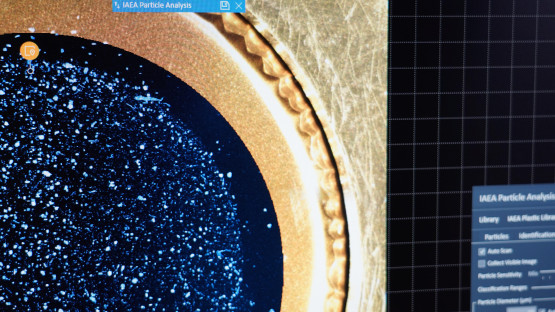A new four-year IAEA coordinated research project (CRP) will address microplastic pollution in seafood, and the findings will help improve global microplastic monitoring and enhance understanding of how microplastic pollution affect seafood and human health.
Around 3.1 billion people worldwide rely on seafood as a source of protein. But increasing plastic waste — and the resulting microplastic pollution — poses a growing threat to the global seafood supply.
Microplastics often come from synthetic fibres and industrial processes, and can be as small as one micron (one-thousandth of a millimetre). These particles have become a major environmental concern, threatening both marine ecosystems and human health. When marine organisms ingest microplastics, these tiny particles can enter the human body through seafood consumption. Microplastics can cause physical damage and act as carriers for harmful chemicals, viruses and bacteria, making their impact even more dangerous. This contamination not only threatens seafood production and fisheries, but also risks consumer health, potentially limiting access to safe and nutritious food. A recent study found that 99% of seafood samples tested contained microplastics, highlighting the urgent need for effective monitoring as well as solutions to protect both marine organisms and human health.





